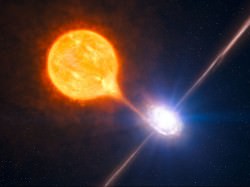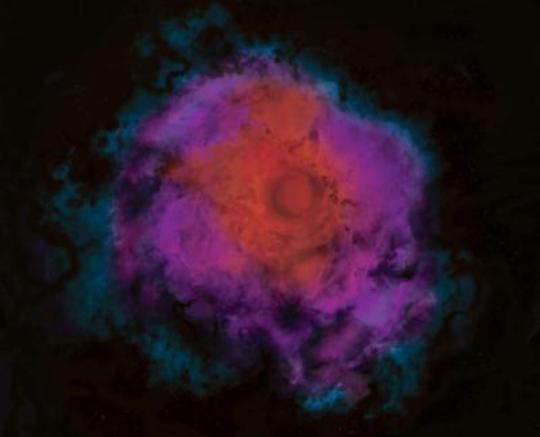It seems like the good times will go on forever, so feel free to keep on wasting energy. But entropy is patient, and eventually, it’ll make sure there’s no usable energy left in the Universe.
Thanks to the donations of generations of dinosaurs and their plant buddies, we’ve got fossils to burn. If we ever get off our dependence on those kinds of fuels, we’ll take advantage of renewable resources, like solar, wind, tidal, smug and geothermal. And if the physicists really deliver the goods, we’ll harness the power of the Sun and generate a nigh unlimited amount of fusion energy using the abundant hydrogen in all the oceans of the world. Fire up that replicator, the raktajino is on the house. Also, everything is now made of diamonds.
We’ll never run out of H+. Heck that stuff is already cluttering up our daily experience. 75% of the baryonic mass of the Universe is our little one-protoned friend. Closely followed up by helium and lithium, which we’ll gladly burn in our futuristic fusion reactors. Make no mistake, it’s all goin’ in.
It looks like the good times will never end. If we’ve energy to burn, we’ll never be able to contain our urges. Escalating off into more bizarre uses. Kilimajaro-sized ocean cruise liners catering to our most indulgent fantasies, colossal megastructure orbital laser casinos where life is cheap in the arena of sport. We’ll build bigger boards and bigger nails.or something absolutely ridiculous and decadent like artificial ski-hills in Dubai. Sadly, it’s naive to think it’s forever. Someday, quietly, those good times will end. Not soon, but in the distant distant future, all energy in the Universe will have been spent, and there won’t a spare electron to power a single LED.
Astronomers have thought long and hard about the distant future of the Universe. Once the main sequence stars have used up their hydrogen and become cold white dwarfs and even the dimmest red dwarfs have burned off their hydrogen. When the galaxies themselves can no longer make stars. After all the matter in the Universe is absorbed by black holes, or has cooled to the background temperature of the Universe.

Black holes themselves will evaporate, disappearing slowly over the eons until they all become pure energy. Even the last proton of matter will decay into energy and dissipate. Well, maybe. Actually, physicists aren’t really sure about that yet. Free Nobel prize if you can prove it. Just saying.
And all this time, the Universe has been expanding, spreading matter and energy apart. The mysterious dark energy has been causing the expansion of the Universe to accelerate, pushing material apart until single photons will stretch across light years of distance. This is entropy, the tendency for energy to be evenly distributed. Once everything, and I do mean all things, are the same temperature you’ve hit maximum entropy, where no further work can be done.
This is known as the heat death of the Universe. The temperature of the entire Universe will be an infinitesimal fraction of a degree above Absolute Zero. Right above the place where no further energy can be extracted from an atom and no work can be done. Terrifyingly, our Universe will be out of usable energy.

Interestingly, there’ll still be the same amount it started with, but it’ll be evenly distributed across all places, everywhere. This won’t happen any time soon. It’ll take trillions of years before the last stars die, and an incomprehensible amount of time before black holes evaporate. We also don’t even know if protons will actually decay at all. But heat death is our inevitable future.
There’s a glimmer of good news. The entire Universe might drop down to a new energy state. If we wait long enough, the Universe might spontaneously generate a new version of itself through quantum fluctuations. So with an infinite amount of time, who knows what might happen?
Burn up those dirty dinosaurs while you can! Enjoy the light from the Sun, and the sweet whirring power from your counter-top Mr. Fusion reactor. Your distant descendants will be jealous of your wasteful use of energy, non-smothering climate and access to coffee and chocolate, as they huddle around the fading heat from the last black holes, hoping for a new universe to appear.
What’s the most extreme use of energy you can imagine? Tell us in the comments below.


